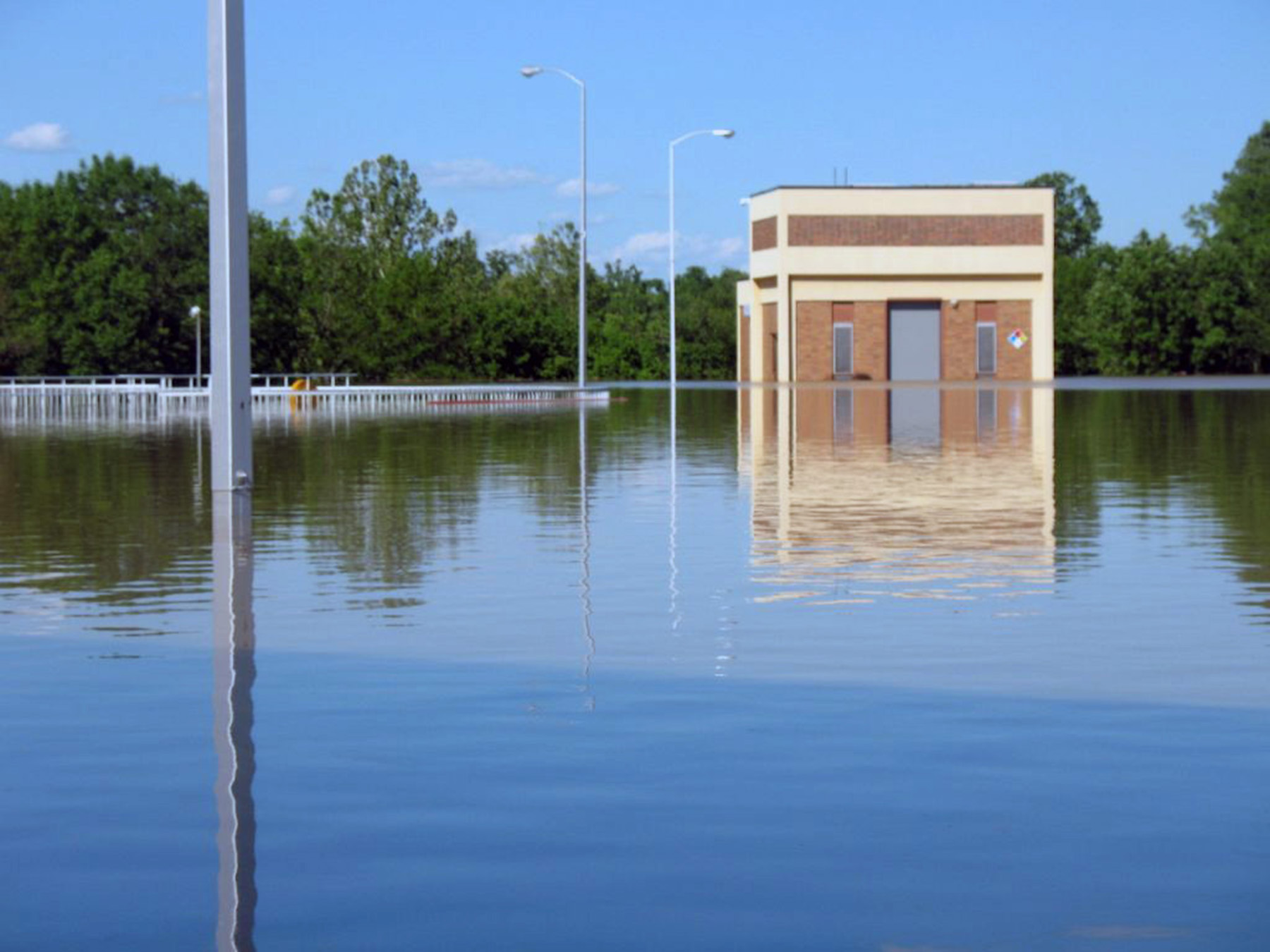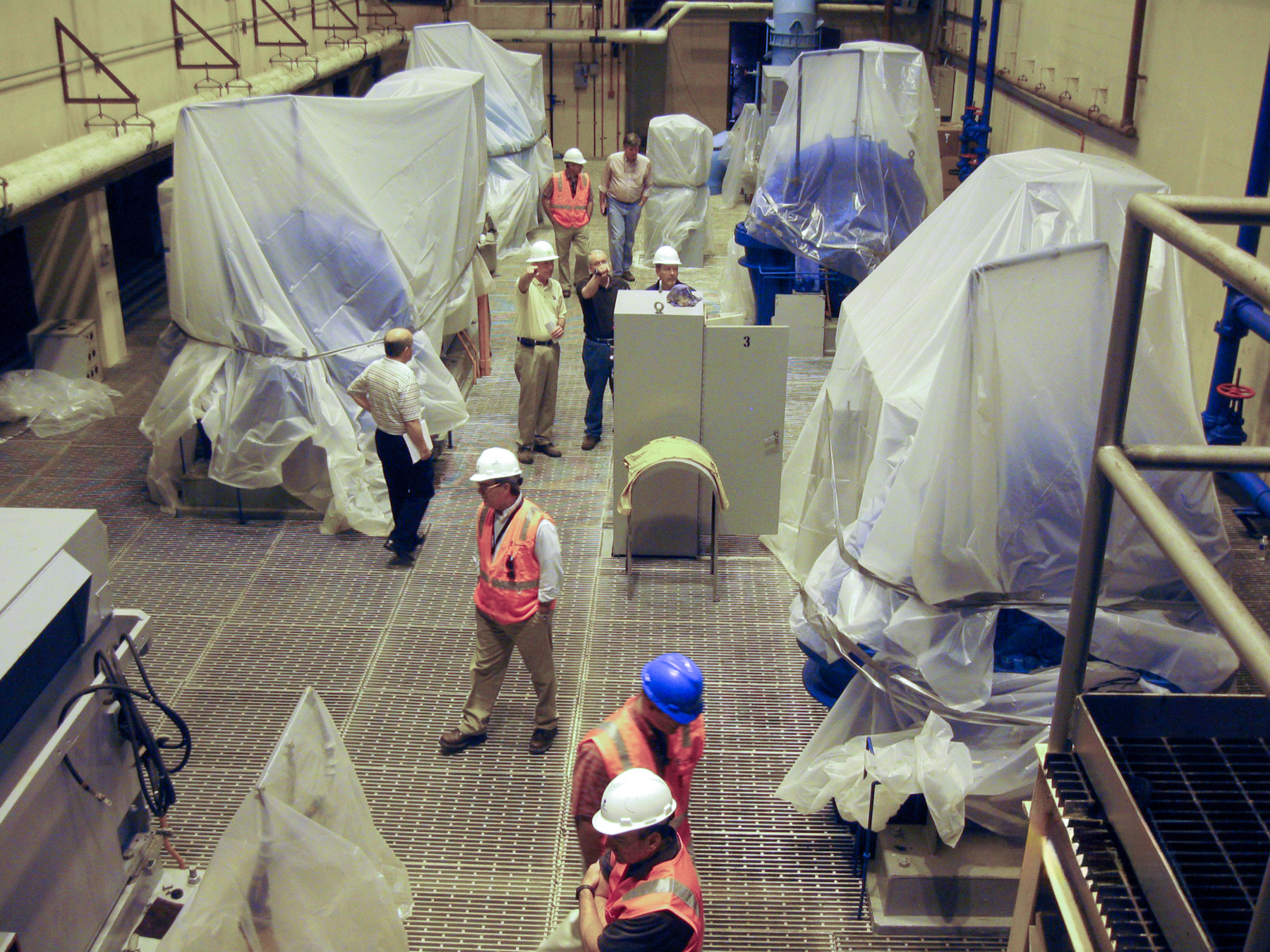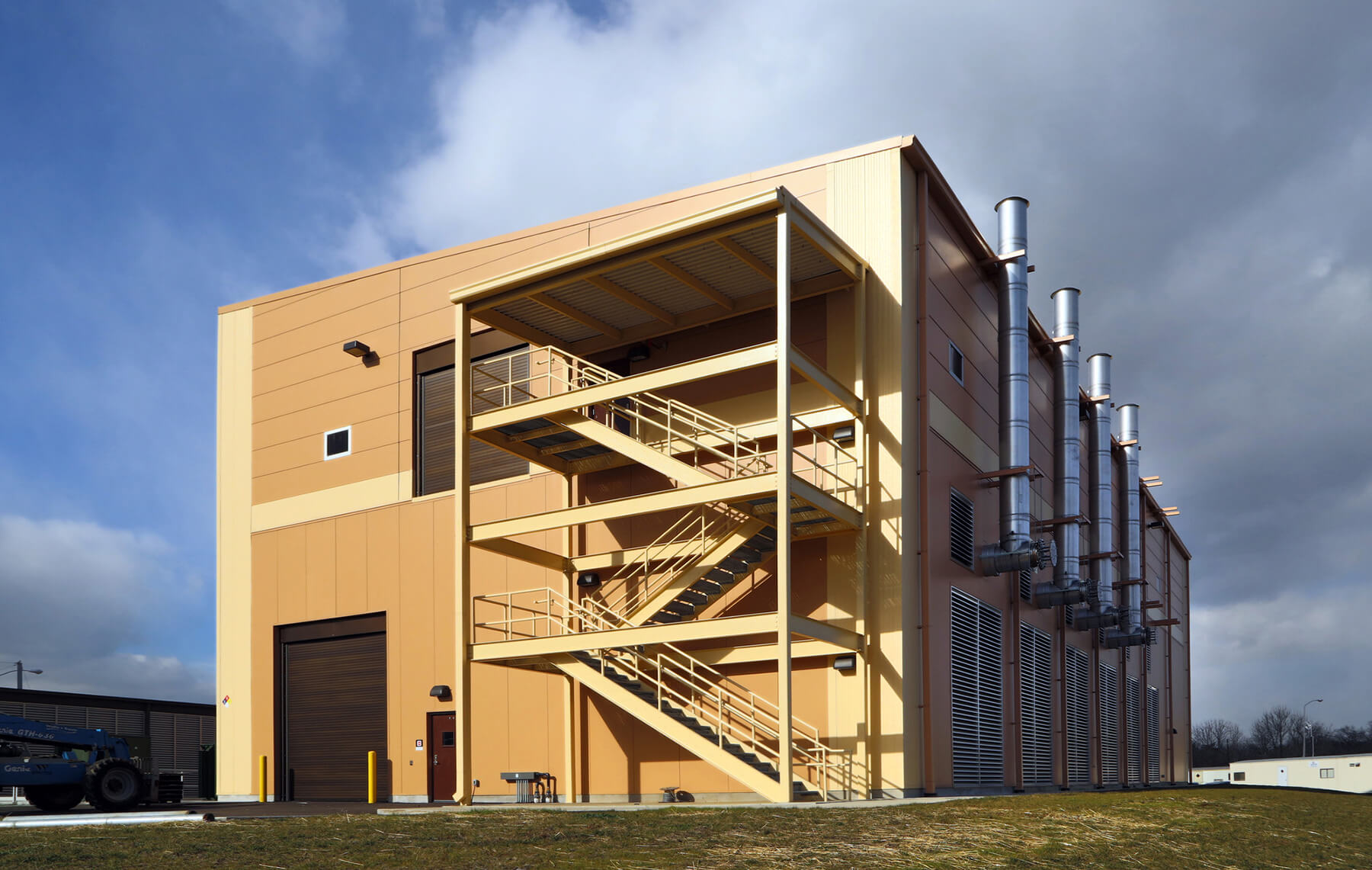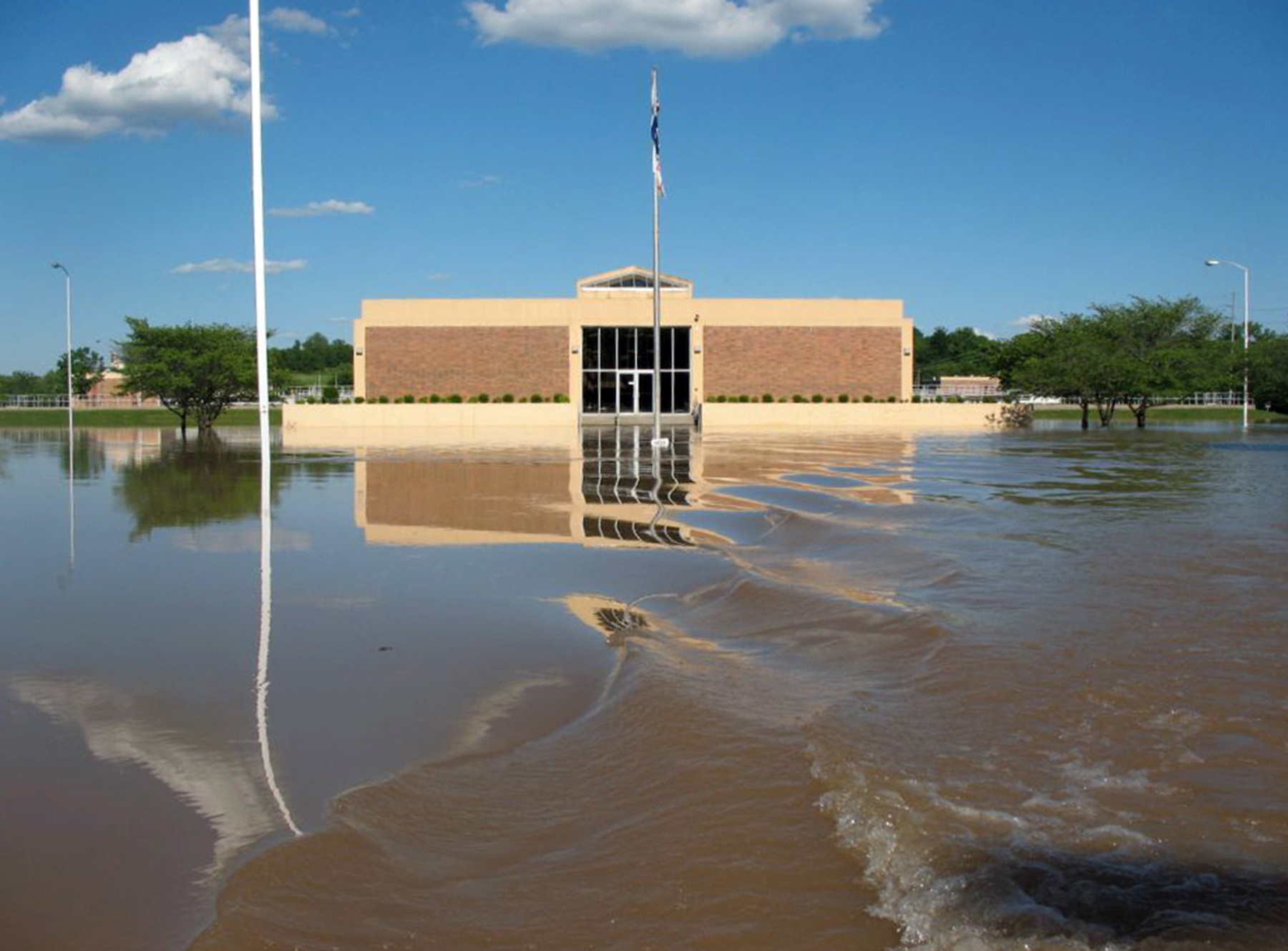
The Flood’s Aftermath
Without the plant in service, water storage capacity fell to a dangerously low 37% percent, and the entire metro area was dependent on Nashville’s second plant—Omohundro Water Treatment Plant—for potable drinking and fire protection water. K.R. Harrington had sustained significant damage to major equipment such as the electrical switchgear, electrical motor control centers, breaker panels, high service pumps, backwash water pumps, numerous electrically actuated valves, instrumentation and controls, chemical feed systems and the clearwells.

Compliant Recovery
Gresham Smith and teaming partner CH2M tracked daily progress of the on-site contractors, developed start up plans, and established protocols for testing of each piece of the treatment process to remain in full compliance with all state and federal regulations. Thanks to the around-the-clock efforts of Metro Water Services and City employees, our engineering team and partners, all water restrictions were lifted less than 30 days after the historic flood and before the city’s water supply was exhausted.

Defining a Path Forward
Shortly before the flood occurred, we were chosen to design the replacement of the plant’s existing switchgear, which had outlived its anticipated life cycle. However, the flood significantly altered the project’s initial purpose and scope to include recovery. In addition to switchgear replacement, Gresham Smith was also tasked with upgrading the chemical feed system to replace outdated equipment as well as provide consistency between the two treatment plants.
